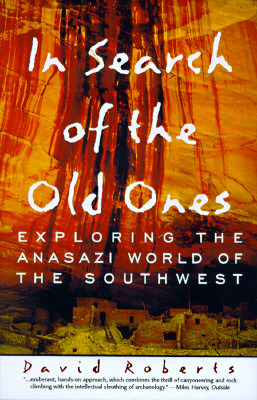On a bright winter morning in 1907, a rancher went searching for a lost calf deep in a labyrinthine canyon on the Colorado Plateau. Descending into a draw so steep that his horse could not follow, he stumbled upon an astonishing find: Betatakin Ruin, a large cliff house complex that seems almost to hang in midair before a sheer sandstone wall. Wandering through the many rooms of the ruin, built late in the 13th century A.D., he found dozens of baskets, pots, and preserved grains and ears of corn that lay out on wooden benches as if ready to be eaten. It was, the rancher later recalled, almost as if its occupants had been chased away in the middle of a meal.
The rancher’s discovery has excited generations of archaeologists, who have since elaborated a cultural history of the Anasazi, Betatakin’s builders; as “lost civilizations” go, the Anasazi—the name means “enemy ancestors” in Navajo—no longer hold much mystery. They were an agricultural people with prodigious skills as builders, the makers of vast cities at Chaco Canyon, Mesa Verde, and Canyon de Chelly, and their eventual decline may have been produced by their successes, when, having exhausted the forests and water sources of the arid plateau, they faced a decades-long drought. The great Anasazi cities fell, and their inhabitants dispersed to found other, smaller settlements on the Hopi mesas. The library of anthropological writings on the Anasazi is large.
The library of good books for the general reader is far smaller, however, and David Roberts adds to it substantially with In Search of the Old Ones. He takes the reader on a closely annotated but not overspecialized tour of some enduring controversies in the historical record, among them the haunting question of whether the Anasazi committed acts of cannibalism in conjunction with warfare. (One day, someone will write a popular history of cannibalism, a subject that anthropologists have been furiously debating for the last three decades.) While he has his own ideas about these matters, Roberts allows that we are unlikely ever to know the truth; as he writes, “archaeology at its most magisterial can only begin to elucidate the passions that grip the heart of a civilization.”
What passions drove the Anasazi we can only guess at. Roberts has a fondness for iconoclastic interpretations, as well as for the underdogs in the scholarly turf battles that Southwestern archaeologists wage with a vengeance. He argues, convincingly, that amateur archaeologist Richard Wetherill, who discovered famous Anasazi sites like Cliff Palace and Mesa Verde and who is generally regarded as little more than a tomb-robber of the sort familiar to readers of Tony Hillerman’s novel A Thief of Time, was a better interpreter of the Anasazi than he is usually given credit for. Many of Wetherill’s supposedly mistaken analyses, Roberts asserts, are actually the fault of “museum staffs who later mishandled his collections.” Claiming to have seen internal memoranda from those museums admitting that identification tags had been separated from their artifacts, Roberts makes a good case in defense of this long-reviled cowboy, who in fact was one of the few Anglos ever to have made himself truly at home in the least-known region of the Southwest.
Roberts is also a partisan of the contemporary archaeologist Stephen Lekson, who maintains that Anasazi kivas—pit structures long thought to have had a ceremonial function—had only a domestic use: a view that has angered many scholars with a vested interest in the theory that the Anasazi were a highly ritualistic society. “On the unthinking assumption that kivas were ceremonial,” Roberts writes, “archaeologists had built complicated edifices, arguing, for instance, from the ration of living rooms to kivas that certain sites were ceremonial centers serving far-ranging populations.” The suggestion that kivas are little more than breakfast nooks may upset the received tradition; also, as Roberts wryly notes, it makes the reconstruction of Anasazi daily life the more interesting.
Readers with little interest in the minutiae of prehistoric research will find Roberts’ accounts of travel in Anasazi country to be more accessible, as well as filled with entertaining adventures. A high point is his descent into the little explored—and appropriately named—Mystery Canyon along a “devious route that wound through and under giant hoodoos, poised like the pendulous omens of some delirious nightmare,” where he makes a few discoveries of his own. Roberts’ descriptions are true to the place, and far more interesting to read than the usual run of guidebooks—few of whose authors have traveled, like Roberts, by llama into the depths of the canyon lands.
“For all the pitiless rigor of that desert land,” Roberts writes, “the Anasazi Southwest forms the most compelling landscape I know of in the world.” He honors that landscape and its former inhabitants with this fine book.
[In Search of the Old Ones by David Roberts New York: Simon and Schuster; 271 pp., $24.00]

Leave a Reply